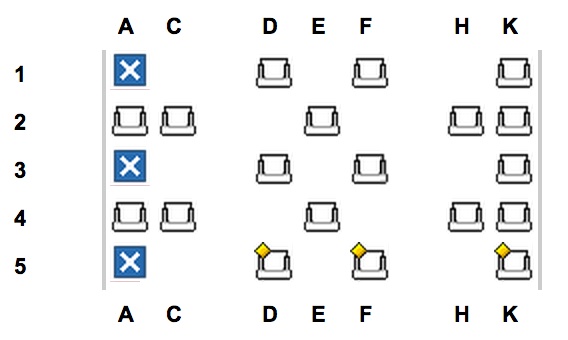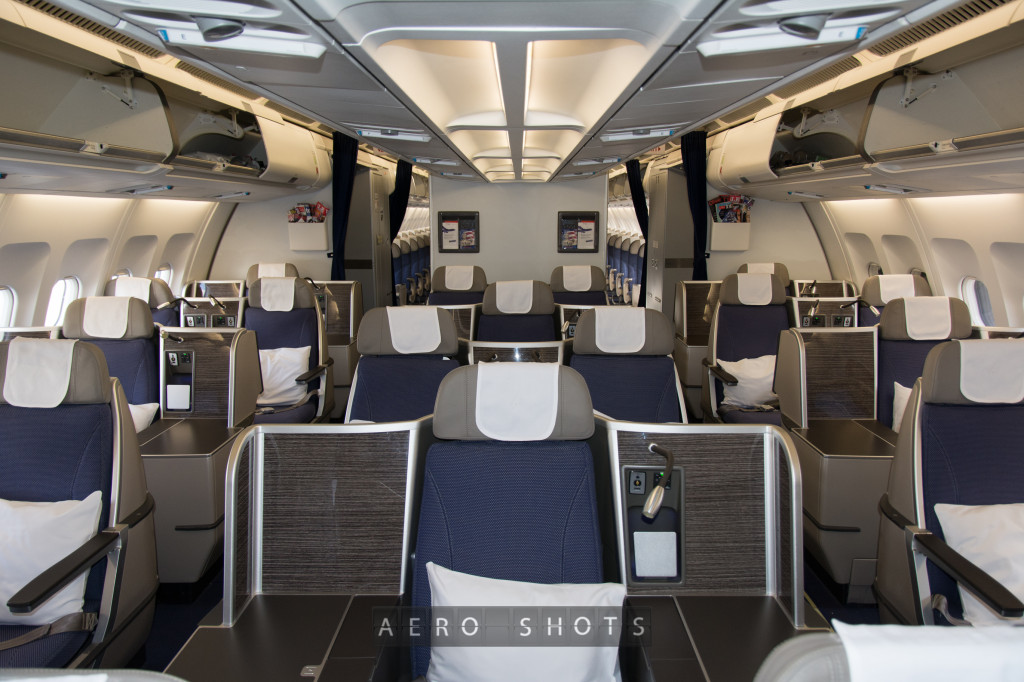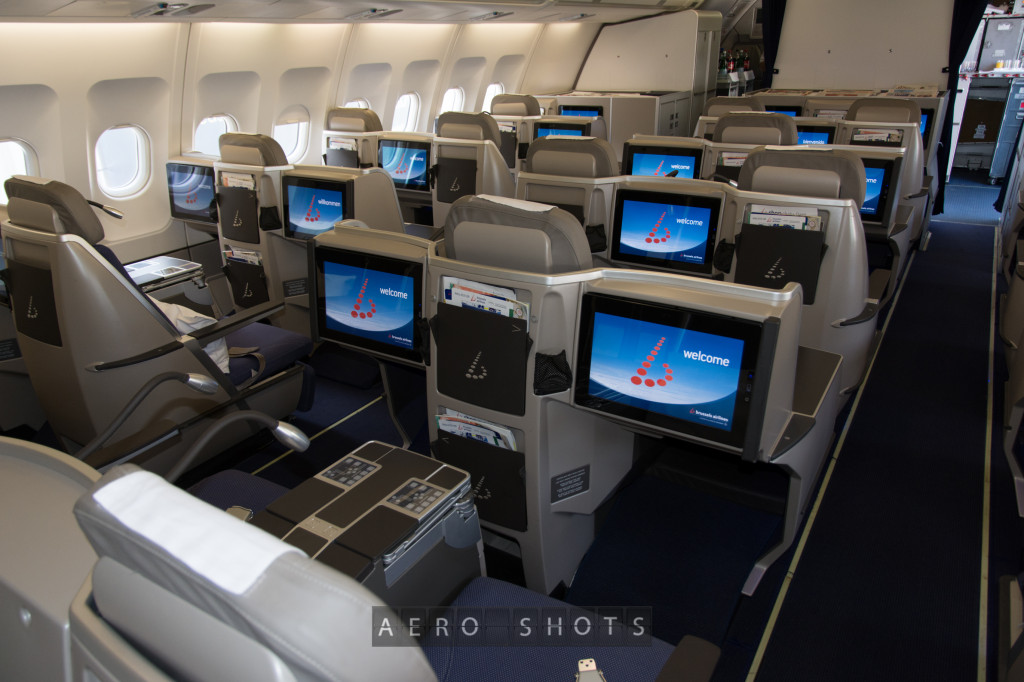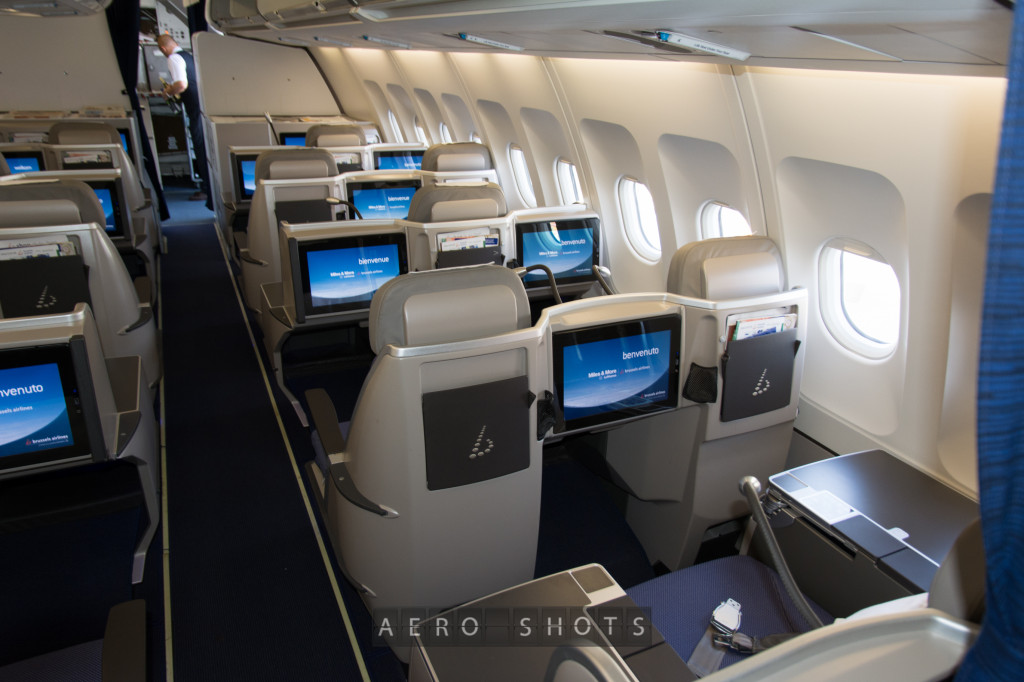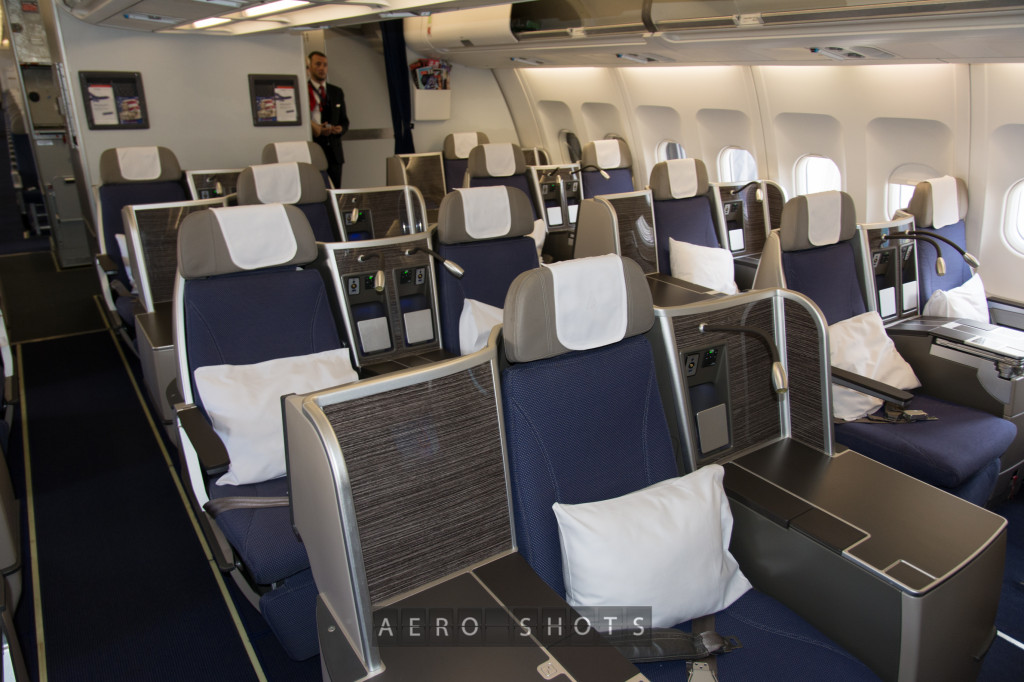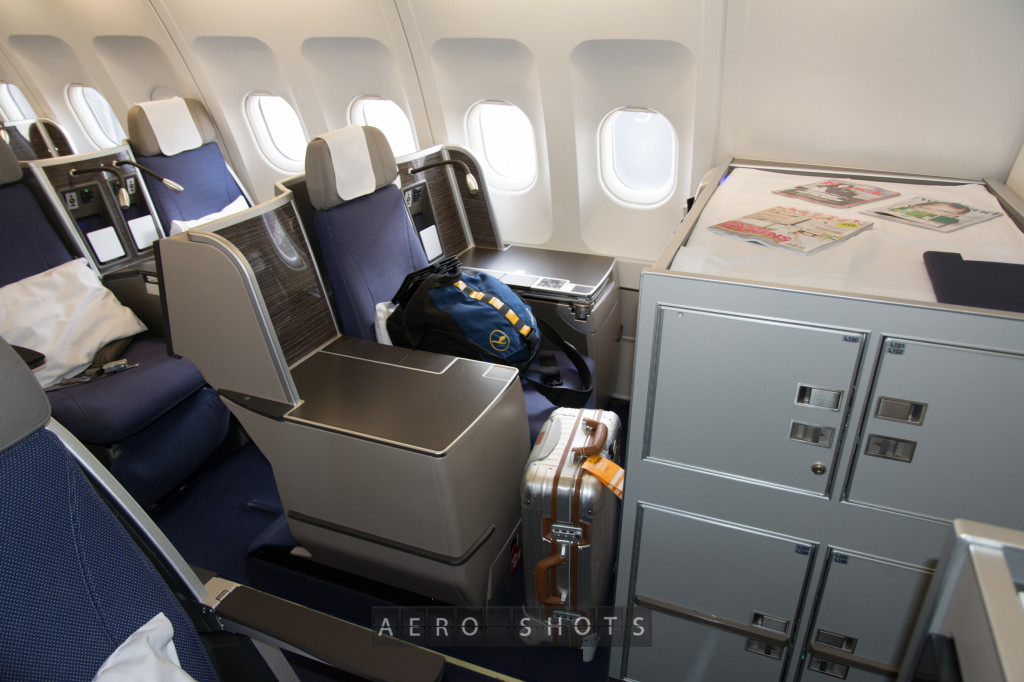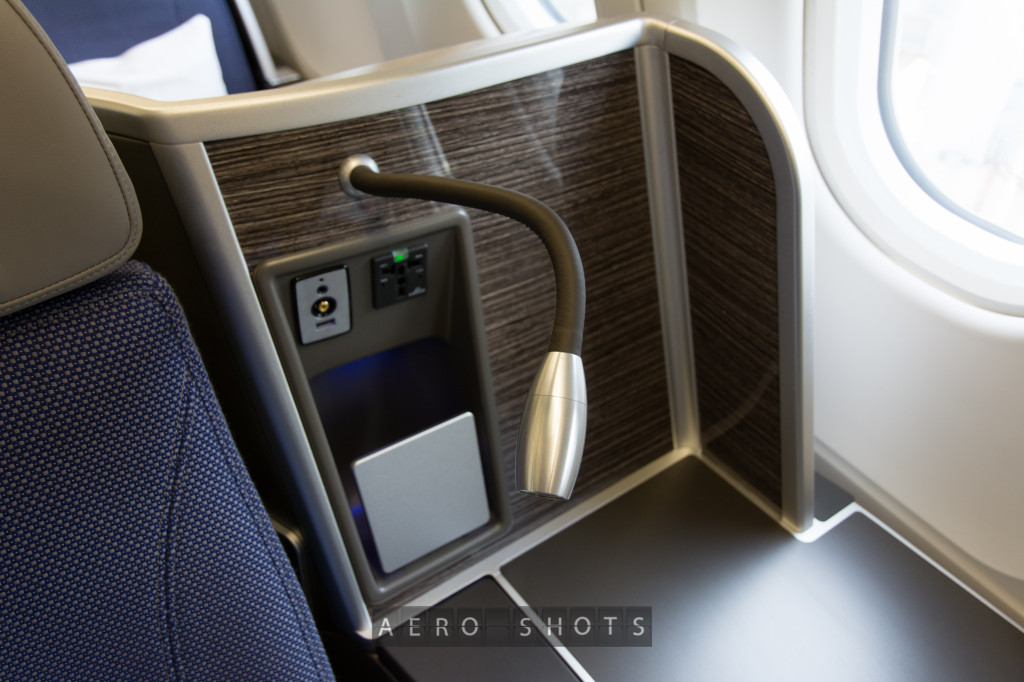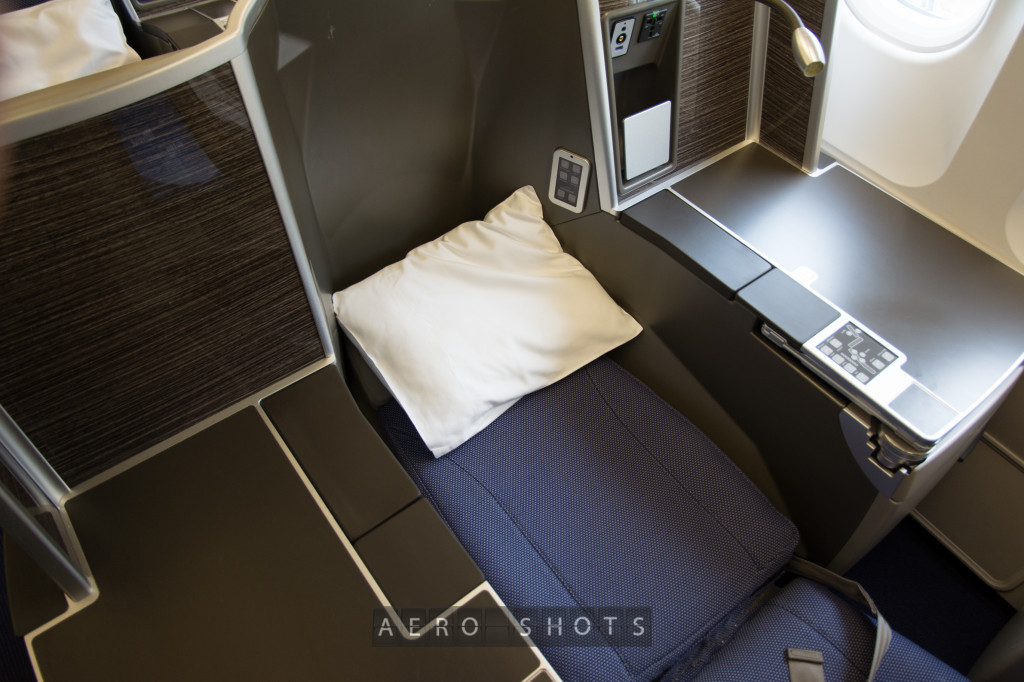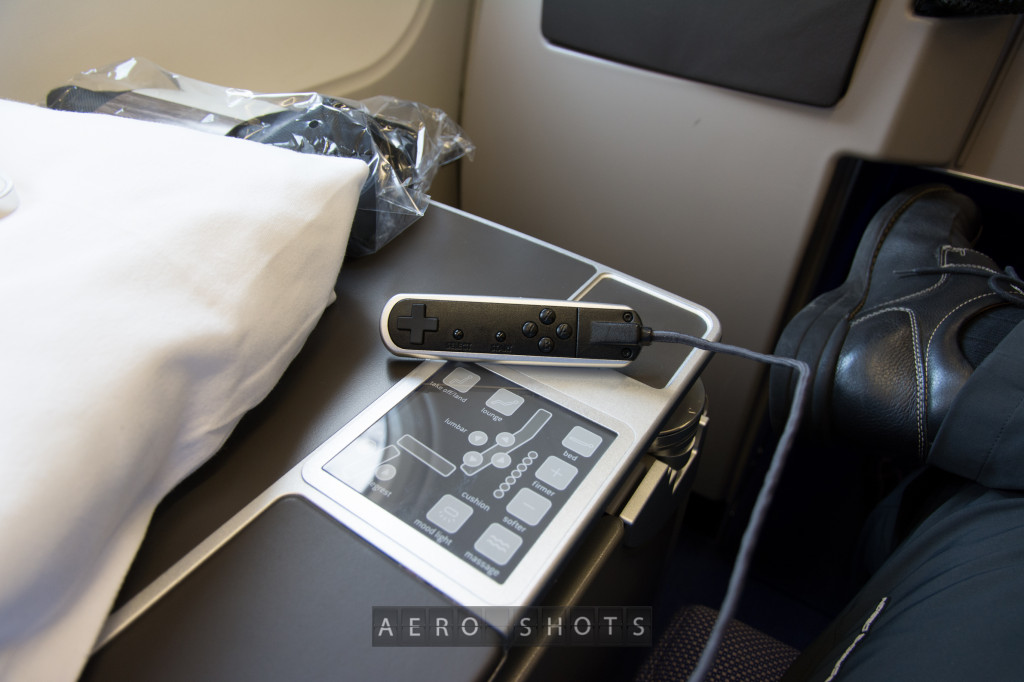On a recent trip to Europe, I had the opportunity to fly in BRUSSELS’ Business Class on the long haul flights between Washington Dulles and Brussels. For my return flight, I was given permission to board shortly after the crew so that I could spend some ‘alone’ time with the A330 prior to general boarding. I had about 20 minutes to spend in the aircraft with full access which gave me a good opportunity to take pictures of the Economy and Business Class cabins. I’ll focus on the Business Class cabin with this post and take a look at the Economy Class cabin in a future write-up.
Brussels’ Business Class cabin offers seating for 22 passengers in an alternating 1-2-1 / 2-1-2 seating configuration across the cabin. What I mean by this is that rows alternate between the 2 seat layouts. Row 1 is a 1-2-1 configuration, row 2 is 2-1-2, row 3 is 1-2-1, row 4 is 2-1-2 and row 5 is 1-2-1 creating a herringbone-like seat map:
This is a fairly unique layout since a fair amount of potential additional seats are given up in lieu of additional space for the single seats. Most airlines would have a 2-2-2 configuration to maximize utilization of space for revenue purposes. For those of you familiar with SWISS’ long haul business class, this is a very similar seat design and layout.
Due to this layout, the cabin feels very spacious and is the ultimate treat for the solo traveler. As you’ll see in the following pictures, the solo traveler has an enormous amount of space which in most cases even exceeds what First Class passengers have on other airlines. Being that BRUSSELS operates their long A330 in a 2-class cabin (Business and Economy), this actually felt more like First Class than Business Class.
Having the cabin all to myself, I was able to take several photos that show the cabin in better detail than I could with passengers aboard. Hopefully the photos convey the quality of the cabin and generous seat layout!
Looking at the cabin from row 1 provides a good view at the alternating seat layout
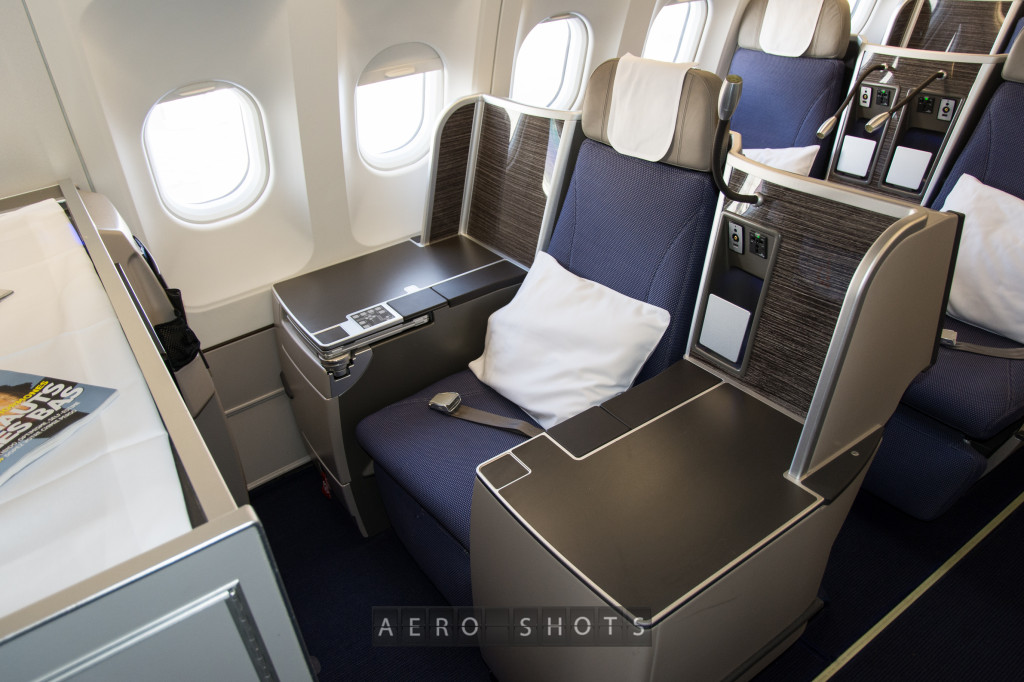 For solo travelers, the amount of space is extraordinary.
For solo travelers, the amount of space is extraordinary.
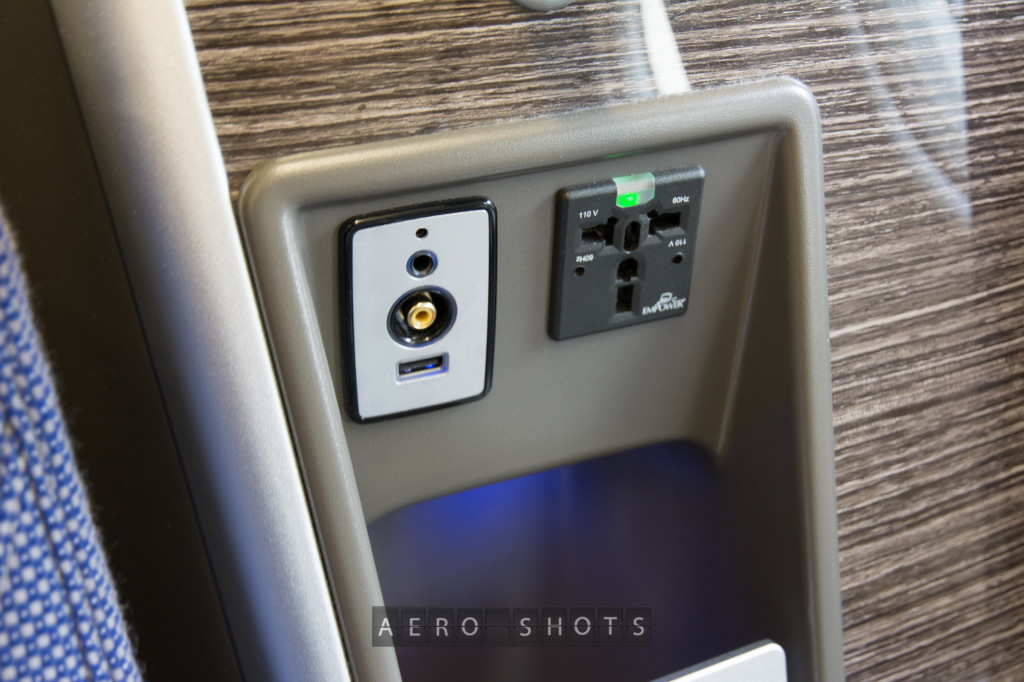
Each seat comes with a USB port, headphone jack and power outlet. An additional USB port and headphone jack are located on the IFE screen.
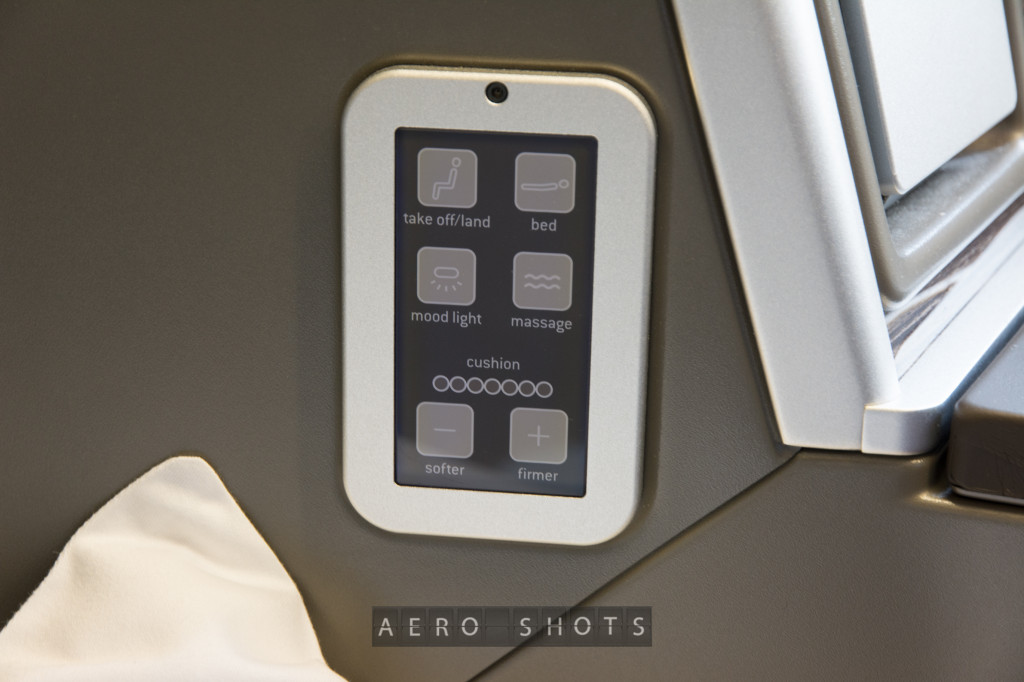
An additional control panel reveals itself when the seat is in flat mode. This allows for easy access to seat position, lighting, massage and cushion firmness when the seat is laid flat.
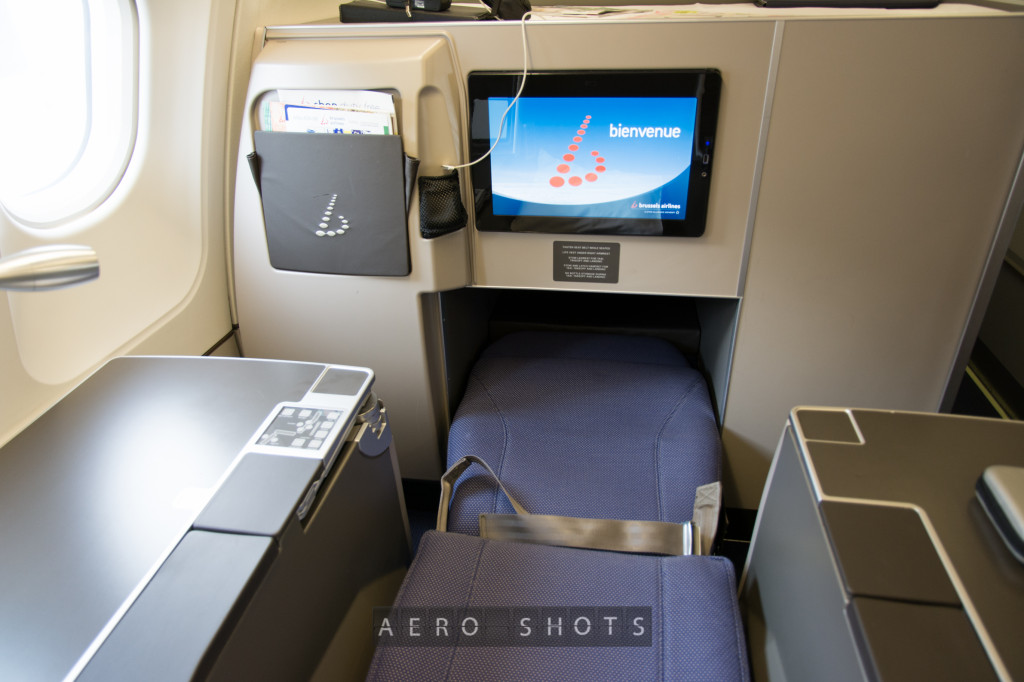
A cubby hole allows for full seat extension and room for the tallest passengers. The IFE screen is bright and touch sensitive, additionally you can control the IFE with a remote. Glare can be an issue, but is easily resolved by lowering the window shade.
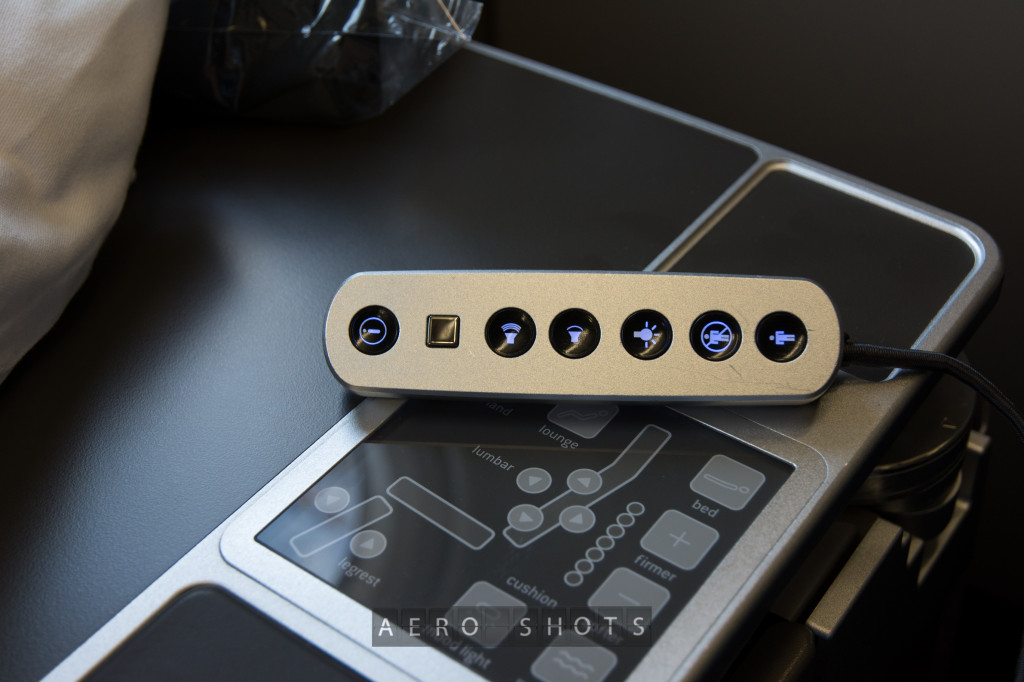
The main side of the remote contains controls for volume, lighting and attendant call. The square lens to the left allows for you to control the cursor on the screen with your thumb, similar to a trackpad. The main control panel (pictured below the remote) provides nearly infinite seat adjustment possibilities.
Related: Brussels Airlines Hospitality on flight from IAD to BRU


